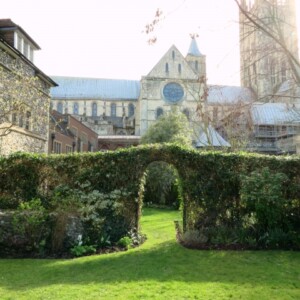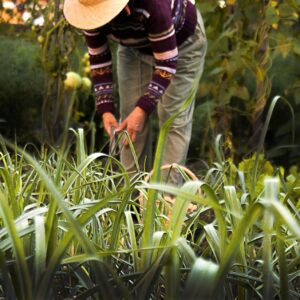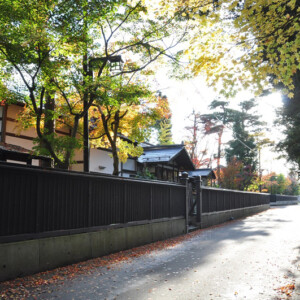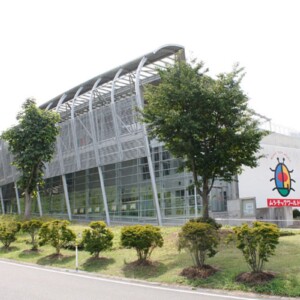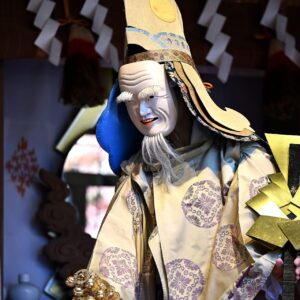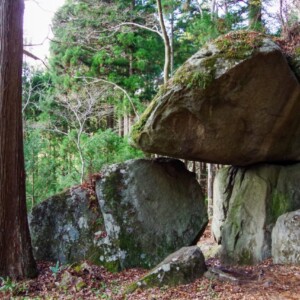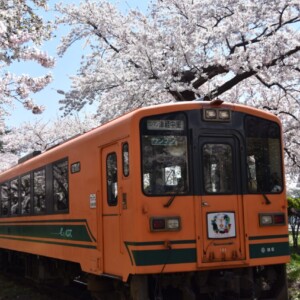
The history of Kamiyama, which developed as a castle town and post town with hot springs [Kamiyama City, Yamagata Prefecture]
table of contents
- 1 During the Sengoku period, territorial disputes intensified in Kaminoyama, located on the border between Yonezawa and Yamagata
- 2 Matsudaira Shigetada, the first lord of Kaminoyama, also contributed to the development and maintenance of hot springs
- 3 Toki Yoriyuki and his son Yorin, who contributed greatly to the development of Kaminoyama Domain
- 4 Kaminoyama Castle, all of whose walls were demolished by the Edo Shogunate
- 5 "Samurai Residence Street" where four former samurai residences remain
- 6 The Kaminoyama Domain drum and fife music played to inspire the troops during the Boshin War
Kaminoyama City is located in the southeastern part of Yamagata Prefecture, south of Yamagata City. During the Edo period, it was the castle town of the Kaminoyama Domain and also flourished as a post town on the Ushu Kaido road, which connected Dewa Province (Yamagata and Akita prefectures) to the Oshu Kaido road, and was also popular as a post town with hot springs
During the Sengoku period, territorial disputes intensified in Kaminoyama, located on the border between Yonezawa and Yamagata
The area of Kaminoyama was originally "Kamiyama" or "Kaminoyamagata," but it is said that the name came to be Kaminoyama after Satomi Mitsunaga (also known as Mogami Mitsunaga), a military commander descended from the Mogami clan who became the lord of the area around the end of 1300, referred to himself as "Kaminoyamadono" (see Kaminoyama City Profile and Kaminoyama City Hall).
Mitsunaga is known for building the first castle on Mount Kokuzo in Kaminoyama around 1400. The castle on Mount Kokuzo was also known as Takadate Castle or Kamegaoka Castle, and was in use until 1535 when Takee Yoshitada built Tsukioka Castle (Kaminoyama Castle) on its current site
Kaminoyama was the southernmost area controlled by the Mogami clan, and was the site of battles with the Date and Uesugi clans that attacked from the south. At times it became Date territory, but Takee Yoshitada recaptured it and it once again became Mogami clan territory
However, Yoshitada's grandson Satomi Yoshikane (Kaminoyama Yoshikane) came into conflict with the head lord, Mogami Yoshiaki, and was defeated in battle and assassinated in 1579. After that, it remained the territory of the Mogami clan until the Kaminoyama Domain was established in 1622
Mount Kokuzo and Takatate Castle <Information>
- Facility name: Mount Kokuzo and Takadate Castle
- Location: Matsuyama Takadate, Kaminoyama City, Yamagata Prefecture (Mount Kokuzo)
- access:
- By car: Approximately 15 minutes from Yamagata Kaminoyama IC on the Tohoku Chuo Expressway
- Train: Approximately 15 minutes on foot from Kaminoyama Onsen Station on the Yamagata Shinkansen or JR Ou Main Line
Google Map
Matsudaira Shigetada, the first lord of Kaminoyama, also contributed to the development and maintenance of hot springs
The first lord of Kaminoyama Domain was Matsudaira Shigetada of the Nomi Matsudaira family (Nomi-cho, Okazaki City, Aichi Prefecture) who became the domain's first lord in 1622 with a fief of 40,000 koku
However, four years later he was transferred to Sanda Domain (Sanda City, Hyogo Prefecture), and after that the lord of the domain changed frequently between the Gamo clan, the Toki clan, and the Kanamori clan in a short period of time
Finally, in 1697, Nobumichi Fujii Matsudaira of Niwase Domain (Okayama City, Okayama Prefecture) moved to Kaminoyama Domain, and from then on the Fujii Matsudaira family became the lords of the domain until the Meiji Restoration
The first feudal lord, Matsudaira Shigetada, only held office for a little over four years, but he developed the castle town of Kaminoyama and also worked hard to develop hot springs. Hot springs in Kaminoyama were discovered in 1458 during the reign of the Satomi clan, by Gesshu, a monk from Hizen Province (Saga Prefecture)
Many hot springs were subsequently discovered in the vicinity, and by Shigetada's time the town had become known as a post town with hot springs
Tsuru no Yasumiishi, the site where hot springs were discovered, remains to this day
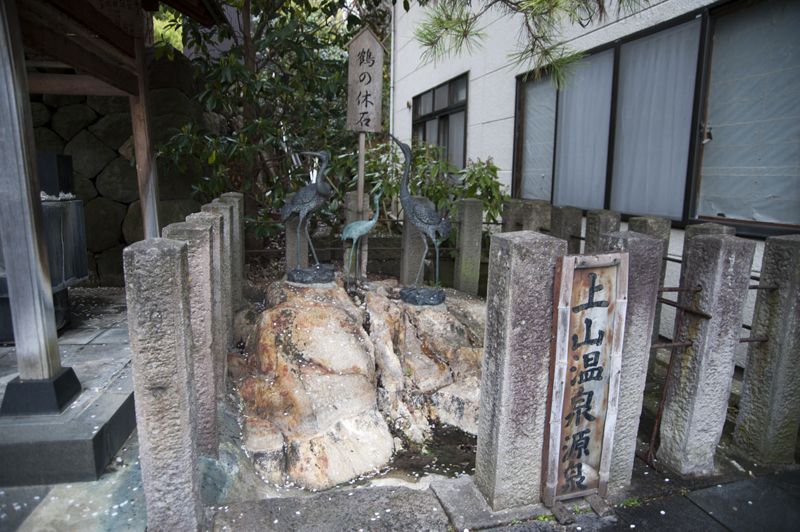
Legend has it that Kaminoyama Onsen was founded when "Gekketsu saw a crane healing its wounds and discovered that hot springs were gushing out there" (according to the Kaminoyama Onsen source information board), and at the site there is the "Tsuru no Yasumi Ishi" (Cranes' Rest Stone), from which hot springs gush out
This hot spring is also known as "Tsuruhagi no Yu" (Cranes Leg Hot Spring) due to its historical origins, and there is a foot bath next to it
Crane Rest Stone <Information>
- Facility name: Tsuru no Yasumiishi
- Address: 4-12 Yumachi, Kaminoyama City, Yamagata Prefecture
- Phone number: 023-672-0839 (Kaminoyama City Tourism and Products Association)
- Business hours: 6:00-22:00
- Usage fee: Free
- access:
- By car: Approximately 10 minutes from Kaminoyama Onsen IC on the Tohoku Chuo Expressway
- Train: Approximately 20 minutes on foot from Kaminoyama Onsen Station on the Yamagata Shinkansen or JR Ou Main Line
Google Map
Shimo-oyu Public Bath, the first public bath opened to the people of Matsudaira Shigetada
Furthermore, Kaminoyama Onsen's Shimo-Oyu Public Bath was the first public bath opened to the people of the domain by Matsudaira Shigetada in 1624. Although the building and hot spring facilities have changed, the hot springs have been popular for 400 years
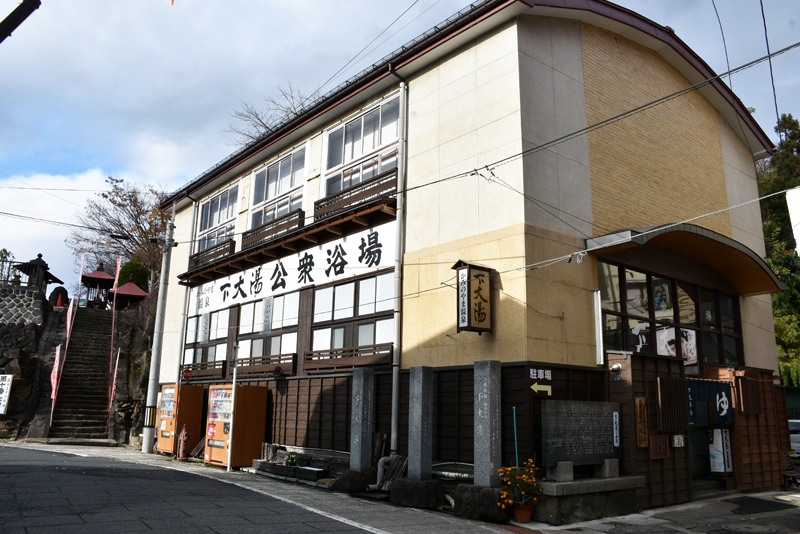
Shimo-oyu Public Bath <Information>
- Facility name: Shimo-oyu Public Bath
- Address: 9-30 Tokamachi, Kaminoyama City, Yamagata Prefecture
- Phone number: 023-672-0839 (Kaminoyama City Tourism and Products Association)
- Business hours: 6:00-22:00 (6:30 from December to February)
- Bathing fee: Adults (junior high school students and above) 150 yen, elementary school students 100 yen, hair washing fee 100 yen
- Closed: Open daily
- access:
- By car: Approximately 10 minutes from Kaminoyama Onsen IC on the Tohoku Chuo Expressway
- Train: Approximately 15 minutes on foot from Kaminoyama Onsen Station on the Yamagata Shinkansen or JR Ou Main Line
Google Map
Toki Yoriyuki and his son Yorin, who contributed greatly to the development of Kaminoyama Domain
Kaminoyama flourished most during the reign of Toki Yoriyuki and his son Yoritaka, who became the feudal lords of the Sanda Domain two years after Matsudaira was transferred there
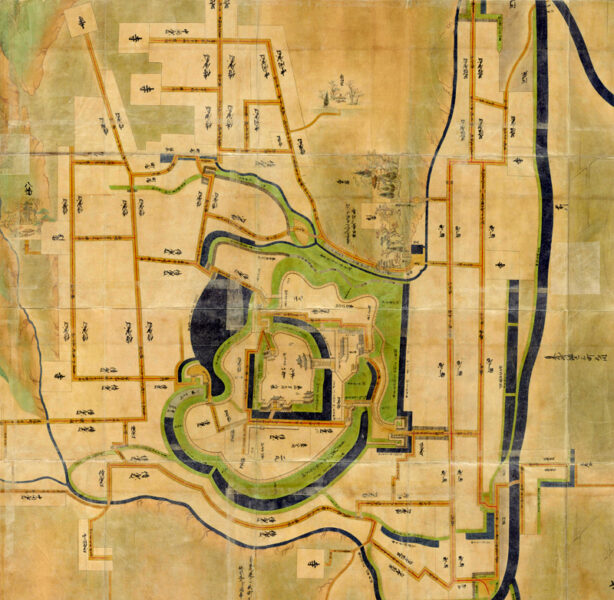
Toki Yoriyuki was the lord of Moriya Domain (Ibaraki Prefecture) in Soma County, Shimousa Province (Chiba and Ibaraki Prefectures), but in 1628 he moved to Kaminoyama with a stipend of 25,000 koku. Yoriyuki devoted himself to the development of Kaminoyama Castle, building the Honmaru (three-story castle tower), Ninomaru, Sannomaru, and outer moat, while Yorin even created a luxurious garden. He also made great contributions to the development of Kaminoyama, including the development of the castle town and transportation routes, the development of mining and new rice fields, the construction of shrines and temples, the construction of irrigation channels, and the protection of hot springs

Yoriyuki also built a magnificent building for the high priest Takuan, who was exiled to Kaminoyama for some reason, and treated him with great courtesy
Three years later, the misunderstanding with the Edo Shogunate was cleared up and the monk Takuan returned to Edo, but during his three years in Kaminoyama, Yoriyuki received various teachings from Takuan and is said to have grown significantly as a feudal lord
The house that Yoriyuki built for the monk Takuan, called Harusame-an, has been restored to its original appearance and is preserved as an Important Cultural Property of Yamagata Prefecture, and is open to the public
Harusamean ruins <Information>
- Facility name: Harusamean ruins
- Address: 2-10-12 Matsuyama, Kaminoyama City, Yamagata Prefecture
- Phone number: 023-672-0824 (Site of Harusame-an)
- Closed: December 28th to January 3rd
- Admission fee: Free
- access:
- By car: Approximately 15 minutes from Kaminoyama Onsen IC on the Tohoku Chuo Expressway
- Train: Approximately 15 minutes on foot from Kaminoyama Onsen Station on the Yamagata Shinkansen or JR Ou Main Line
Google Map
Kaminoyama Castle, all of whose walls were demolished by the Edo Shogunate
During the reign of the Toki clan, a castle was built and the Kaminoyama domain flourished, but this came to an end after only two generations and 64 years. In 1691, the Edo Shogunate transferred Yorin to the Nooka domain in Echizen Province (Fukui Prefecture), and for some reason, they demolished the entire castle
The Kaminoyama Domain continued to exist even after the Toki clan took over and into the Meiji period, but the triple-story castle tower and luxurious Ninomaru bailey were not rebuilt, and the castle was a simple structure with only the lord's residence built on the former site of the Ninomaru bailey
At the current Kaminoyama Castle site, nothing remains except for a small remnant (the remains of a moat). The current castle tower is a replica built in 1982 (Showa 57) to mimic the shape of a typical three-story castle tower, as it was impossible to know what the original castle tower looked like. The castle tower houses the Kaminoyama Castle Local History Museum, where exhibits on the history and folklore of Kaminoyama are displayed

Kaminoyama Castle (Kaminoyama Castle Local History Museum) <Information>
- Facility name: Kaminoyama Castle (Kaminoyama Castle Local History Museum)
- Address: 3-7 Motojouchi, Kaminoyama City, Yamagata Prefecture
- Phone number: 023-673-3660 (Kaminoyama Castle Local History Museum)
- Business hours: 9:00-17:15 (last entry 16:45)
- Admission fee: Adults 420 yen, high school and university students 370 yen, elementary and junior high school students 50 yen (groups 40 yen)
- Closed: Thursdays (or the preceding weekday if the Thursday is a public holiday), December 29th to 31st
- access:
- By car: Approximately 10 minutes from Kaminoyama Onsen IC on the Tohoku Chuo Expressway
- Train: Approximately 12 minutes on foot from Kaminoyama Onsen Station on the Yamagata Shinkansen and JR Ou Main Line
Google Map
"Samurai Residence Street" where four former samurai residences remain
The castle town of Kaminoyama Domain spreads out northwest from the castle, and four former samurai residences remain to this day. Between the center of Kaminoyama Onsen and Tsuru no Yasumiishi, the spot where the hot spring was discovered, the four buildings are located, two facing each other, and are known as "Samurai Residence Street."
All four houses are estimated to have been built around 200 years ago (at the end of the Edo period) and are curved houses with thatched roofs, a style commonly seen in the Tohoku region. A curved house is an L-shaped building, and the part that juts out in front was mainly used as a stable in farmhouses, but in samurai residences it was used as a sitting room and was thought to be a place to repel attacking enemies
Morimoto family
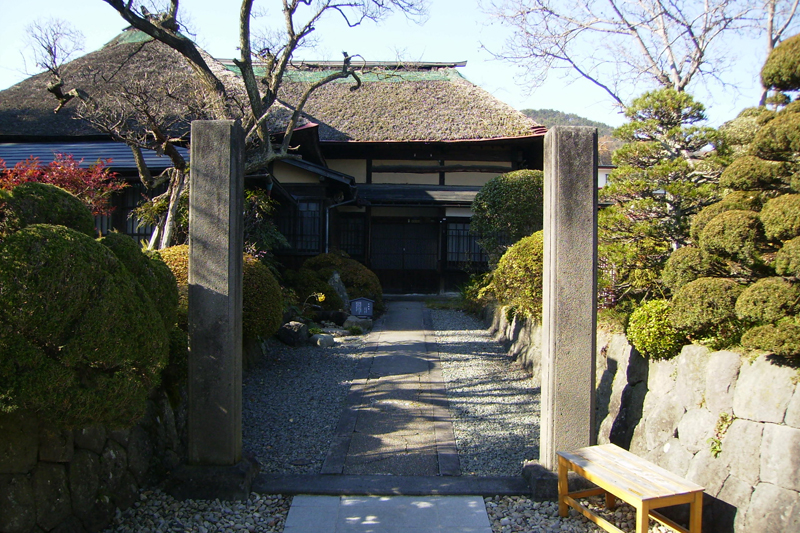
The Morimoto family were vassals who served the Fujii Matsudaira family before coming to Kaminoyama, and held very important positions, teaching at the domain school "Meishinkan" (only the site remains). Descendants of the Morimoto family still live there, and the area is open to the public except for the garden
Morimoto family <Information>
- Facility name: Morimoto family
- Address: 1-7-48 Tsuruhagicho, Kaminoyama City, Yamagata Prefecture
- Phone number: 023-672-1111 (Kamiyama City Board of Education)
Miwa family
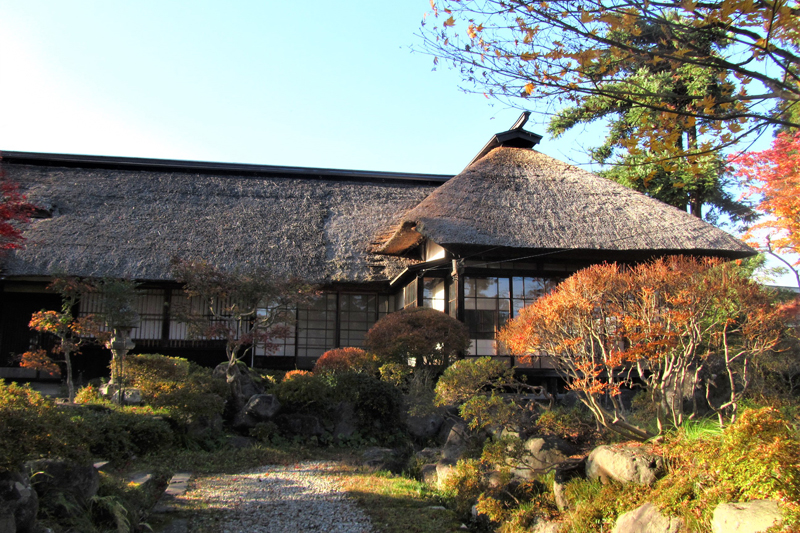
The Miwa family were vassals of Matsudaira Nobufuru, the 11th lord of the Kaminoyama domain, and were apparently chamberlains who looked after the lord. During the Meiji period, they made their fortune in the financial industry. The Miwa family home is open to the public, and you can get a good idea of what a samurai residence was like at the time
Miwa family <Information>
- Facility name: Miwa-ya
- Address: 1-7-46 Tsuruhagicho, Kaminoyama City, Yamagata Prefecture
- Phone number: 023-673-1078
- Opening hours: 9:00-16:45
- Closed: Mondays, December 28th - January 3rd
- Admission fee: Adults 220 yen, High school and university students 160 yen, Elementary and junior high school students 50 yen
Yamada family
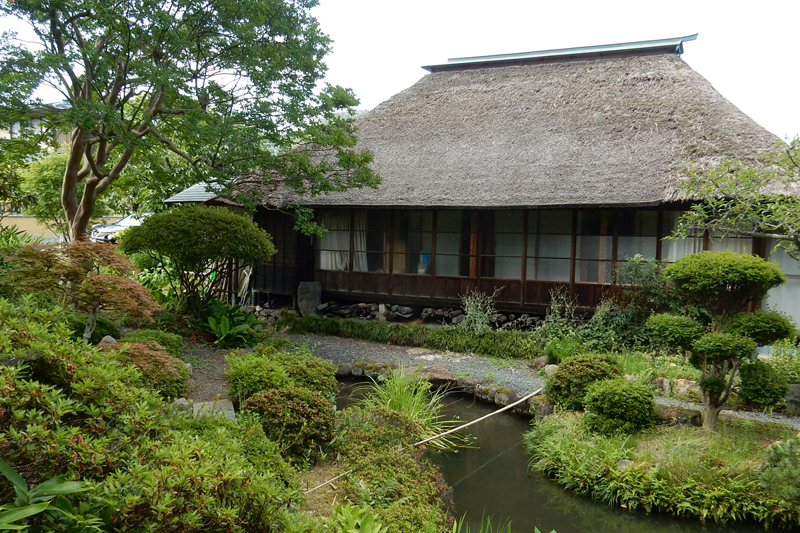
The Yamada family was a family of horse attendants who looked after the horses ridden by the feudal lord, and their descendants still live there today
Yamada Family <Information>
- Facility name: Yamada family
- Address: 1-7-41 Tsuruhagicho, Kaminoyama City, Yamagata Prefecture
- Phone number: 023-672-1111 (Kamiyama City Board of Education)
Former Sogabe family
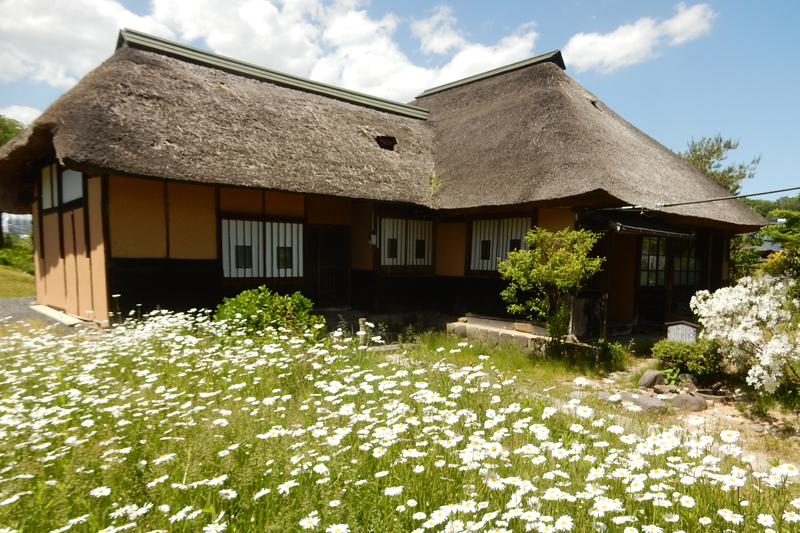
The former Sogabe family was a vassal of Matsudaira Nobumichi, the 7th lord of the Kaminoyama domain, and was a lineage of high-ranking samurai who held positions such as horse guards, magistrates, and ometsuke (supervising inspector) who supervised officials. Only the exterior and garden can be viewed
Former Sogabe Family House <Information>
- Facility name: Former Sogabe family home
- Address: 1-7-38 Tsuruhagicho, Kaminoyama City, Yamagata Prefecture
- Phone number: 023-672-1111 (Kamiyama City Board of Education)
The Kaminoyama Domain drum and fife music played to inspire the troops during the Boshin War
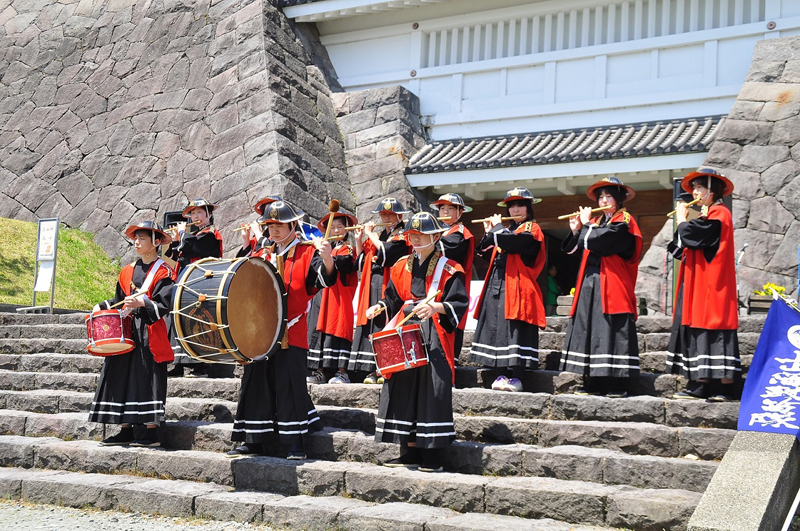
The Kaminoyama Domain suffered great damage during the Boshin War (1868-1869) which broke out after the Meiji Restoration between the forces of the new government and the shogunate, as it was torn between the two
The Kaminoyama Domain fought a total of five times during the Boshin War. First, in April 1868, it fought against the Shonai Domain as part of the new government forces. After that, it joined the Oshu-Uetsu Alliance, an organization on the side of the former shogunate, and fought against the new government forces three times. However, when the neighboring Yonezawa Domain surrendered to the new government forces, the Kaminoyama Domain followed suit and was once again incorporated into the new government forces. The fifth and final battle was to suppress the stubborn resistance of the Shonai Domain, the former shogunate forces
The Kaminoyama Domain was at the mercy of the great waves of the Meiji Restoration, but during the Boshin War, it adopted French-style military training and started the "Kaminoyama Domain Drum and Fife Music" to boost the morale of its troops
The Kaminoyama Domain drum and fife music was discontinued for a while after the Meiji period, but was revived in the early Showa period and is still performed at festivals and events today. It is an intangible cultural property of Kaminoyama City
Kaminoyama Domain Drum and Fife Music <Information>
- Name: Kaminoyama Domain Drum and Fife Music
- Phone number: 023-630-3344 (Yamagata Prefectural Education Bureau, Lifelong Education and Learning Promotion Division)



!["Mogami safflower" certified as a Japanese heritage and Japanese agricultural heritage [Yamagata Prefecture] Mogami safflower](https://jp.neft.asia/wp-content/uploads/2022/12/30121446_m-1-150x150.jpg)
![[Kamiyama City, Yamagata Prefecture] “Narageshuku” is a post town on the Ushu Kaido road that was used by 13 feudal lords during the Edo period. Narageshuku](https://jp.neft.asia/wp-content/uploads/2023/06/f78e23352609b6986737197999be71c6-150x150.webp)
![[Tsuruoka City, Yamagata Prefecture] Tsuruoka City, home to four national hot spring resorts 26661228 m](https://jp.neft.asia/wp-content/uploads/2023/03/26661228_m-150x150.jpg)
![Yurihonjo City, where Honjo, Kameda and Yajima domains were intersected between the Kubota and Shonai domains [Akita Prefecture] FF2C8AAA4350E7E179F97F97B38B3A2302F-1](https://jp.neft.asia/wp-content/uploads/2024/04/ff2c8aaa4350e7e179f97f38b3a2302f-1-150x150.jpg)
![Hot springs gush out in a place where there are no volcanoes! "Yuzawa Geopark" where you can see the mystery of the earth up close [Akita Prefecture] 4550228_m](https://jp.neft.asia/wp-content/uploads/2023/02/4550228_m-150x150.jpg)
![Hiyama Ando clan, ruled Akita during the Sengoku period and based in Noshiro [Akita Prefecture] Akita Fan](https://jp.neft.asia/wp-content/uploads/2025/03/0275d341934f847be3452ea4662d9a4e-150x150.jpg)
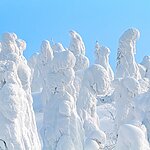
![Scary and slightly sad stories... "Michinoku Otogi Kaido" with many stories left behind [Shichigasyu-cho, Shiraishi City, Miyagi Prefecture] Fairytale images](https://jp.neft.asia/wp-content/uploads/2023/04/be73b392233d2fe609797e999f8ca547-1-150x150.jpg)
